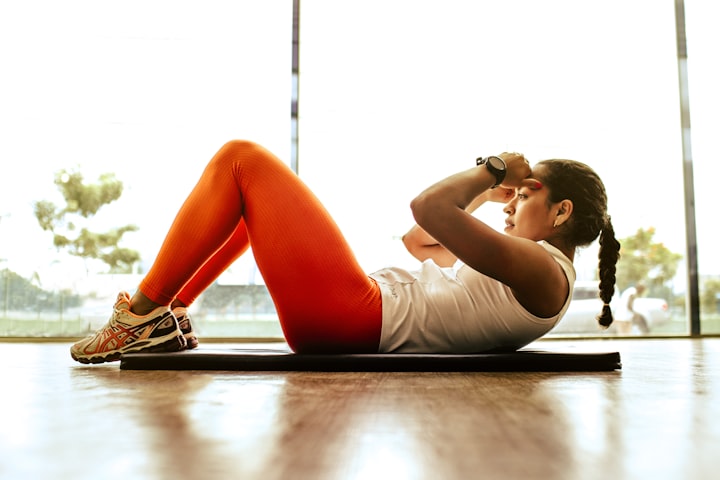Researchers Uncover The amount Exercise You Want to 'Counterbalance' a Day of Sitting
Scientists Reveal How Much Exercise You Need to 'Offset' a Day of Sitting

We realize that investing bunches of energy plunking down isn't great as far as we're concerned, yet exactly how much activity is expected to neutralize the negative wellbeing impacts of plunking as the day progressed?
Research proposes around 30-40 minutes out of every day of developing a perspiration ought to get it done.
As long as 40 minutes of "moderate to fiery power actual work" consistently is about the perfect add up to adjust 10 hours of standing by, the exploration says - albeit any measure of activity or even standing up serves somewhat.
That depends on a meta-examination concentrate on distributed in 2020 dissecting nine past investigations, including a sum of 44,370 individuals in four distinct nations who were wearing some type of wellness tracker.
The examination found the gamble of death among those with a more stationary way of life went up as time spent participating in moderate-to-vivacious power actual work went down.
"In dynamic people doing around 30-40 minutes of moderate to energetic power actual work, the relationship between high stationary time and hazard of death isn't essentially not the same as those with low measures of stationary time," the scientists made sense of in their paper.
As such, placing in a few sensibly escalated exercises - cycling, lively strolling, planting - can bring down your gamble of a previous demise right down to what it would be on the off chance that you weren't doing all that lounging around, to the degree that this connection should be visible in the amassed information of a huge number of individuals.
While meta-investigations like this one generally require some intricate spot getting across independent examinations together with various workers, timescales, and conditions, the advantage of this specific piece of exploration is that it depended on moderately true information from wearables - not information self-detailed by the members.
At that point, the review was distributed close by the arrival of the World Wellbeing Association 2020 Worldwide Rules on Actual work and Inactive Way of behaving, set up by 40 researchers across six mainlands. The English Diary of Sports Medication (BHSM) likewise put out an extraordinary release to convey both the review and the updated rules.
"As these rules underline, all actual work counts and any measure of it is superior to none," said actual work and populace wellbeing specialist Emmanuel Stamatakis from the College of Sydney in Australia.
"Individuals can in any case safeguard their wellbeing and offset the unsafe impacts of actual dormancy."
The examination in view of wellness trackers is extensively in accordance with the 2020 WHO rules, which suggest 150-300 mins of moderate force or 75-150 mins of enthusiastic power actual work consistently to counter stationary way of behaving.
Strolling up the steps as opposed to taking the lift, playing with kids and pets, participating in yoga or moving, doing family errands, strolling, and cycling are completely advanced as manners by which individuals can be more dynamic - and in the event that you can't deal with the 30-40 minutes immediately, the specialists express, get going little.
Making proposals across all ages and body types is precarious, however the 40-minute time period for movement finds a place with past examination. As additional information gets distributed, we ought to look further into how to remain solid regardless of whether we need to invest broadened times of energy at a work area.
"Albeit the new rules mirror the most ideal that anyone could hope to find science, there are still a few holes in our insight," said Stamatakis.
"We are as yet not satisfactory, for instance, where the very bar for 'a lot sitting' is. In any case, this is a quick moving field of examination, and we will ideally have replies in a couple of years' time."
We realize that investing bunches of energy plunking down isn't great as far as we're concerned, yet exactly how much activity is expected to check the negative wellbeing impacts of plunking as the day progressed?
Research proposes around 30-40 minutes of the day of developing a perspiration ought to get it done.
As long as 40 minutes of "moderate to energetic force actual work" consistently is about the perfect add up to adjust 10 hours of standing by, the examination says - albeit any measure of activity or even standing up serves somewhat.
That depends on a meta-examination concentrate on distributed in 2020 breaking down nine past examinations, including a sum of 44,370 individuals in four unique nations who were wearing some type of wellness tracker.
The examination found the gamble of death among those with a more stationary way of life went up as time spent participating in moderate-to-fiery force actual work went down.
"In dynamic people doing around 30-40 minutes of moderate to fiery force actual work, the relationship between high stationary time and hazard of death isn't essentially not quite the same as those with low measures of inactive time," the analysts made sense of in their paper.
All in all, placing in a few sensibly serious exercises - cycling, lively strolling, cultivating - can bring down your gamble of a previous demise right down to what it would be on the off chance that you weren't doing all that lounging around, to the degree that this connection should be visible in the amassed information of a huge number of individuals.
While meta-investigations like this one generally require some intricate speck getting across independent examinations together with various workers, timescales, and conditions, the advantage of this specific piece of exploration is that it depended on moderately genuine information from wearables - not information self-detailed by the members.
At that point, the review was distributed close by the arrival of the World Wellbeing Association 2020 Worldwide Rules on Actual work and Stationary Way of behaving, set up by 40 researchers across six mainlands. The English Diary of Sports Medication (BHSM) likewise put out a unique release to convey both the review and the reexamined rules.
"As these rules stress, all actual work counts and any measure of it is superior to none," said actual work and populace wellbeing scientist Emmanuel Stamatakis from the College of Sydney in Australia.
"Individuals can in any case safeguard their wellbeing and offset the destructive impacts of actual idleness."
The examination in view of wellness trackers is extensively in accordance with the 2020 WHO rules, which suggest 150-300 mins of moderate power or 75-150 mins of vivacious force actual work consistently to counter stationary way of behaving.
Strolling up the steps as opposed to taking the lift, playing with kids and pets, partaking in yoga or moving, doing family errands, strolling, and cycling are undeniably advanced as manners by which individuals can be more dynamic - and on the off chance that you can't deal with the 30-40 minutes immediately, the analysts express, get going little.
Making proposals across all ages and body types is precarious, however the 40-minute time span for movement finds a place with past exploration. As additional information gets distributed, we ought to get more familiar with how to remain sound regardless of whether we need to invest expanded times of energy at a work area.
"Albeit the new rules mirror the most ideal that anyone could hope to find science, there are still a few holes in our insight," said Stamatakis.
"We are as yet not satisfactory, for instance, where the very bar for 'a lot sitting' is. In any case, this is a quick moving field of exploration, and we will ideally have replies in a couple of years' time."





Comments
There are no comments for this story
Be the first to respond and start the conversation.